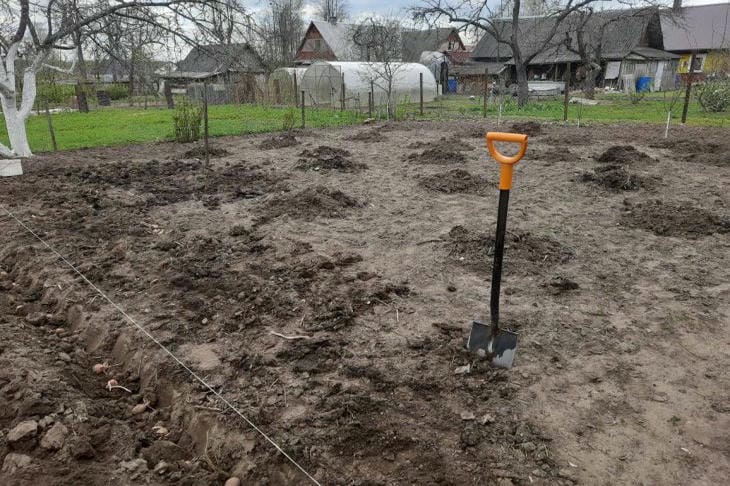Is it possible to dig up the soil with leaves: secrets of ideal soil preparation for the new season
Autumn pleases gardeners not only with a rich harvest, but also with a carpet of colorful leaves.
However, many summer residents ask themselves the question: what is the correct way to deal with fallen leaves when preparing the site for winter?
The answer to this question will help maintain soil fertility and keep your garden healthy.
Benefits of Leaves for Soil
Fallen leaves are a valuable natural resource for gardeners. They contain many nutrients that can enrich the soil.
When decomposing, the leaves turn into natural fertilizer, saturating the soil with nitrogen, phosphorus and potassium.

In addition, fallen leaves serve as an excellent shelter for the root system of plants during the winter, protecting it from freezing.
Risks of digging with leaves
Digging up the soil with leaves has its drawbacks. When you bury a lot of fresh leaves in the soil, the nitrogen balance can be disrupted.
Microorganisms that decompose leaves consume significant amounts of nitrogen, temporarily making it unavailable to plants.
It should be taken into account that some types of leaves, such as oak or walnut, contain substances that can slow the growth of other plants.
Alternatives to digging
Instead of digging up leaves, gardeners may want to consider alternative methods of using fallen leaves.
One of the most effective ways is to create compost. Composting allows you to turn leaves into valuable organic fertilizer that can be used next season.
To speed up the decomposition process, it is recommended to crush the leaves and mix them with other organic waste.
Mulching with leaves
Another useful use for fallen leaves is mulching. A layer of leaves placed around plants helps retain moisture in the soil, suppresses weed growth, and protects roots from sudden temperature changes.
When using leaves as mulch, it is important not to allow them to become too compacted to allow air to reach the plant's root system.
Selective digging
In some cases, digging up the soil with leaves may be justified. For example, in areas with heavy clay soil, adding leaves during digging will help improve the soil structure, making it looser and more breathable.
However, one should observe moderation and not cover too thick a layer of leaves in order to avoid negative consequences for the soil microflora.
Preparing leaves for use
Before using leaves to improve the soil, it is recommended to pre-prepare them.
Leaves can be shredded using a lawn mower or a special shredder. Shredded leaves decompose faster and mix with the soil more easily.
It is also important to remove leaves that are affected by diseases or pests to prevent the spread of infections in the garden.
Seasonal Features of Using Leaves
The use of leaves in gardening depends on the season. In autumn, they can be used to protect perennial plants from the cold.
In spring, crushed and partially rotted leaves become an excellent material for mulching beds. In summer, compost from last year's leaves serves as an excellent fertilizer for feeding plants.
An ecological approach to gardening
Proper use of fallen leaves is an important element of an ecological approach to gardening.
This method allows you to reduce the amount of waste, reduce the need for chemical fertilizers and create favorable conditions for the development of beneficial microorganisms and insects in the garden.
Respect for natural resources, including fallen leaves, helps create a sustainable and healthy ecosystem in your garden.
